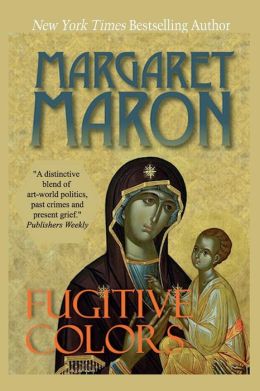
"Transcending genre" is in the eye of the beholder. It is also sometimes a lazy way of praising a novel that exceeds expectations. Still and all I'm tempted to to use it when discussing Margaret Maron's Fugitive Colors. It is an exceptional novel.
Lt. Sigrid Harald, Maron's NYPD homicide detective, becomes involved in an episode which leads not only to the death of a fellow officer but of her lover the renowned painter Oscar Nauman.
Shocking as these plot points are it is what Maron does with them that makes the novel so eloquent and memorable.
In most crime fiction, the world of high culture is generally treated superficially, usually as nothing more than a different and entertaining backdrop. Snobs are fun to observe and listen to. But not in this case as Sigrid Harald discovers when, after putting her police work on hold to mourn and gather herself, she is forced back to her calling as a detective.
In investigating the death of Nauman Maron takes us deep into the world of the art scene. In the course of trying to discover the truth behind his murder, Sigrid Harald is also busy with planning a retrospective of his work. Oscar left her her paintings which are worth millions. But the world of art isn't for sissies. An art dealer central to the story is found murdered.
All this would make for a fine whodunit but Maron isn't satisfied with that. There is a real sense of mordancy throughout the book.Whether it is her detective's loss of a lover or the embittered and sometimes brutal egos of everybody involved in the art world, Maron binds all her themes into the disappointments and betrayls that lurk beneath the surface of her story.
For all the style and refinement of the milieu this is a blunt force page turner.
No comments:
Post a Comment